Adult Horse Vaccination Guide
Both yearlings and adult horses adhere to the same vaccination schedule. View our guide to learn when to vaccinate.
View Document
by Kevin Hankins, DVM, MBA
Biosecurity
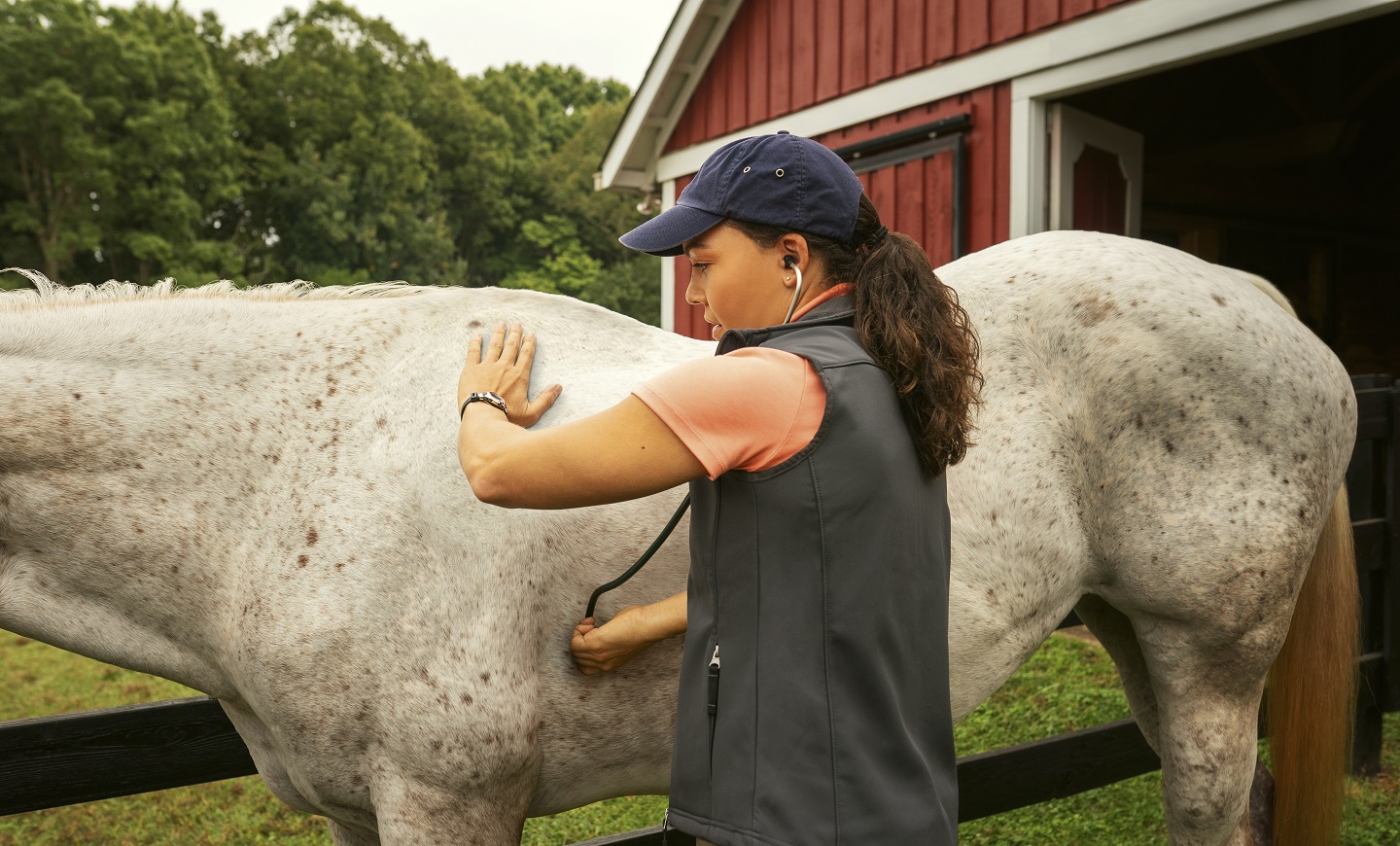


Sick horses are a lot like sick kids. Once someone in the household catches a cold, it’s likely to spread through the entire family. When one horse shows signs of sickness, not only are they affected, but there’s a risk that the virus can quickly spread to other horses in close proximity.
Influenza (flu) and herpesvirus (rhino) are the most common respiratory viruses in horses. Their incidence is increased in horses that travel due to the stress of transportation and showing, and they can potentially spread to neighboring horses in the trailer and back on the farm.
You can reduce your horse’s risk of contracting these contagious respiratory diseases. Doing the right thing for your horse means taking both preventive and proactive measures to reduce the transmission, severity and duration of disease, as well as identifying sick horses quickly to contain the spread of disease to other horses with biosecurity and quarantine measures.
Ultimately, everyone’s goal is to keep your horse happy and healthy. This starts by vaccinating your horse with Core EQ Innovator® against the five core diseases (West Nile virus, Eastern equine encephalomyelitis, Western equine encephalomyelitis, tetanus and rabies) that every horse everywhere may be exposed to, regardless of their location, age, breed or discipline.
Next, the most common risk-based respiratory diseases are flu and rhino. Ask your veterinarian to administer Fluvac Innovator® EHV-4/1 at least 2 to 3 weeks prior to traveling. This will give you the confidence that you’re providing the protection your horse needs to help prevent respiratory illness due to flu or rhino. Routine vaccines are only the first step. Prevention also includes taking precautions to limit the spread of disease before leaving home, on-site and upon your return.
These checklists can help you create an outline for your barn's biosecurity plan.
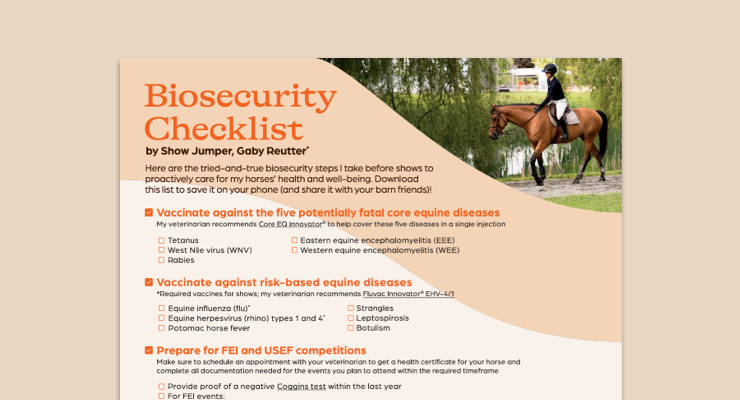
Identifying which horses are sick, which have been exposed and which may potentially get sick is critical for herd management and potential isolation.
Veterinarians can detect and measure infection in 10 minutes using Stablelab, a handheld diagnostic blood test that measures and quantifies SAA—a major acute-phase protein produced by the liver that’s a reliable biomarker for inflammation due to infection.1 SAA levels quickly and significantly increase in response to an infection.
SAA testing has been shown to be 30 times more sensitive than a thermometer in identifying subclinical infection, before your horse even starts showing signs—giving your vet a head start on treatment.2
Knowing a horse is sick before registering a fever provides critical time to implement a plan of action for monitoring, isolating and ultimately treating infected horses faster.
Don’t let a respiratory disease derail your riding and show season. Talk with your veterinarian today about preventive and proactive steps you can take to protect your horse and detect a problem before it gets out of hand with Fluvac Innovator and Stablelab. Learn more by visiting ZoetisEquine.com.
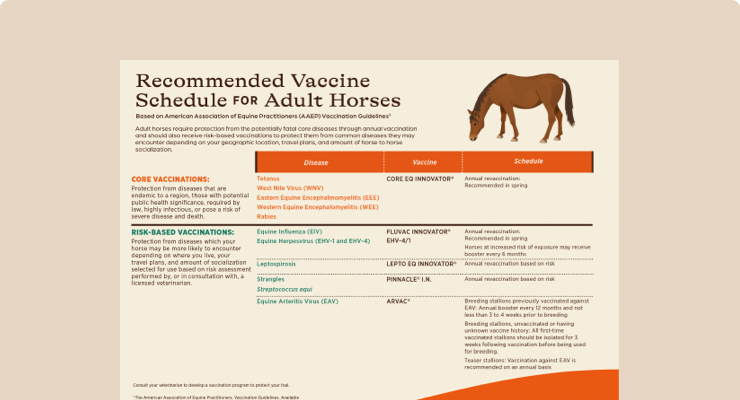
Both yearlings and adult horses adhere to the same vaccination schedule. View our guide to learn when to vaccinate.
View Document
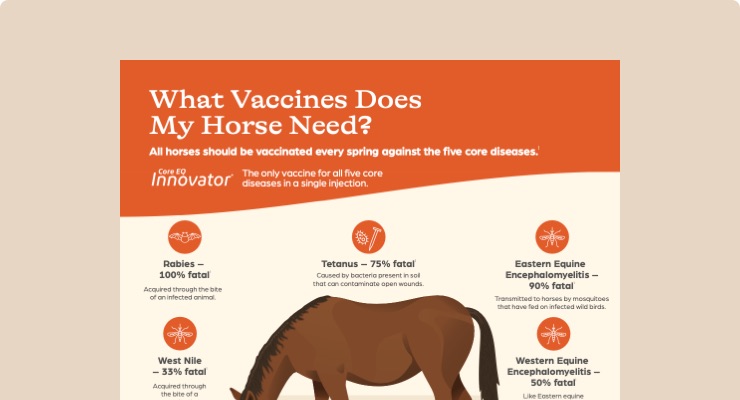
A comprehensive guide to vaccinations your horse may need.
View Document
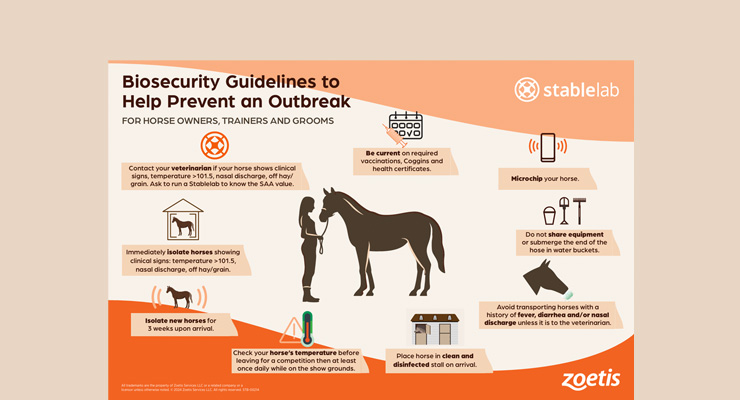
Guidelines for horse owners, trainers and grooms to help prevent an outbreak.
View Document
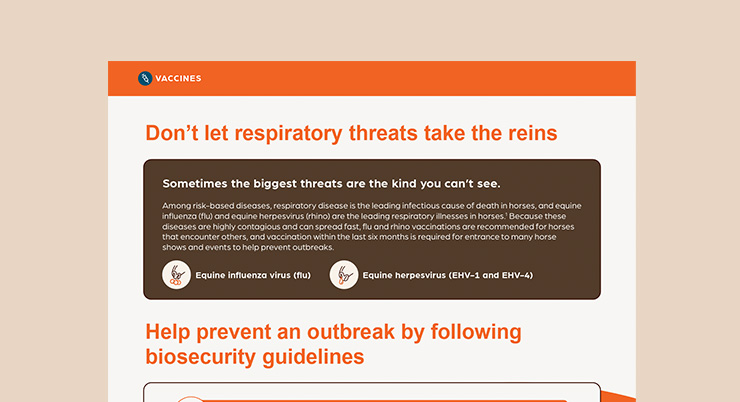
Don't let respiratory threats take the reins. Help prevent an outbreak by following these biosecurity guidelines.
View Document
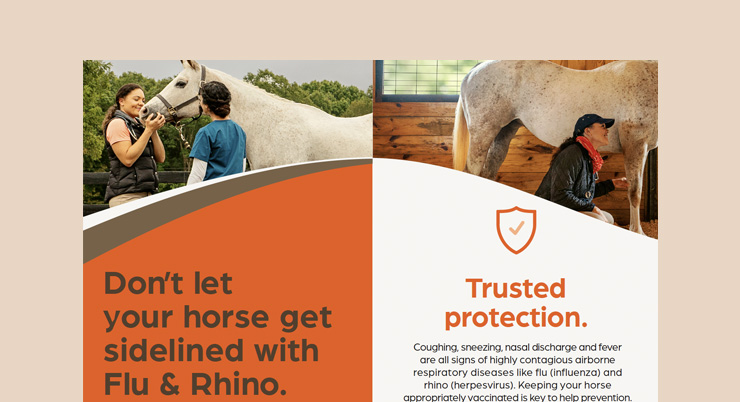
Help prevent infectious respiratory disease outbreaks through vaccination and stall-side diagnostics.
View Document
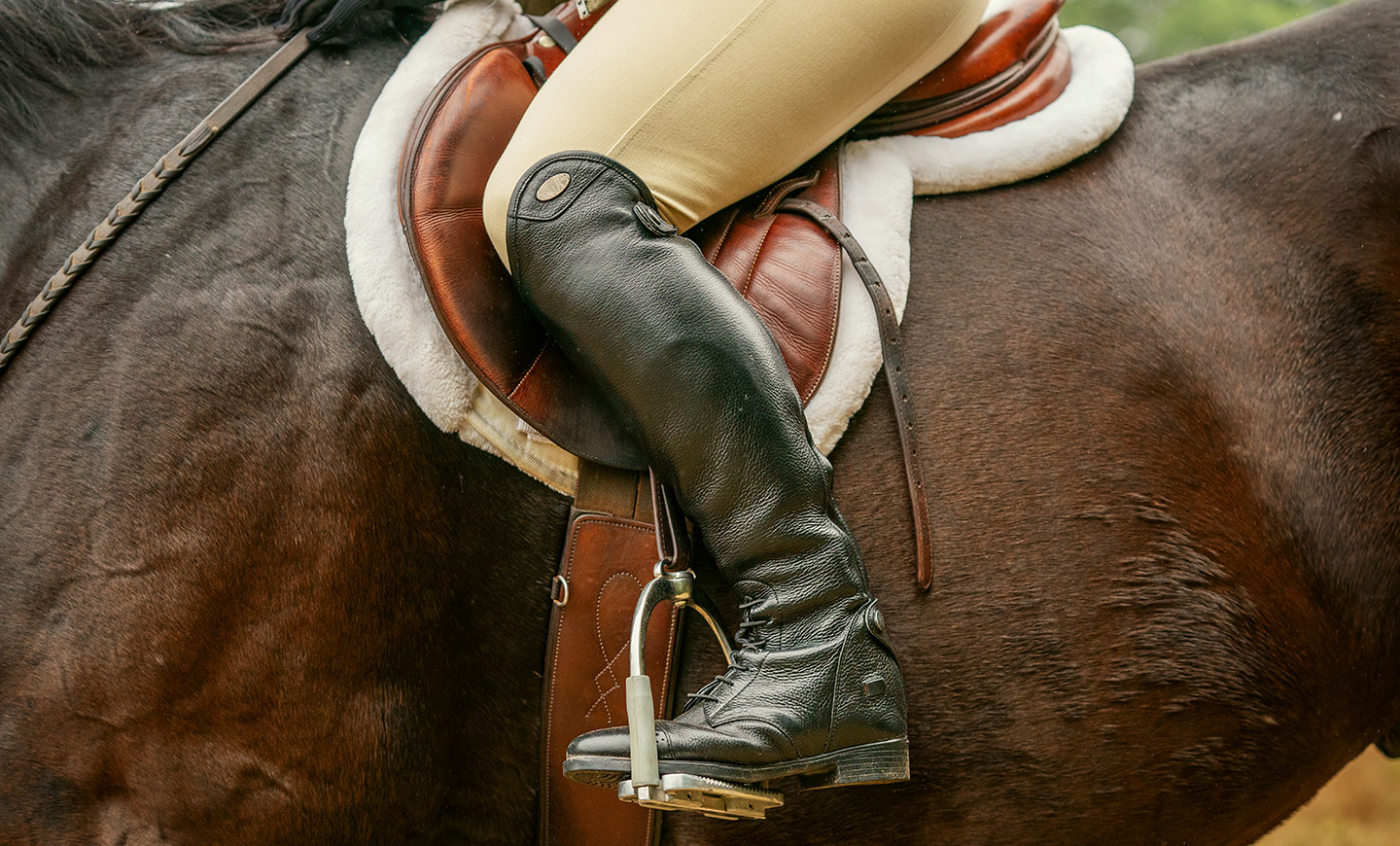
Read Article
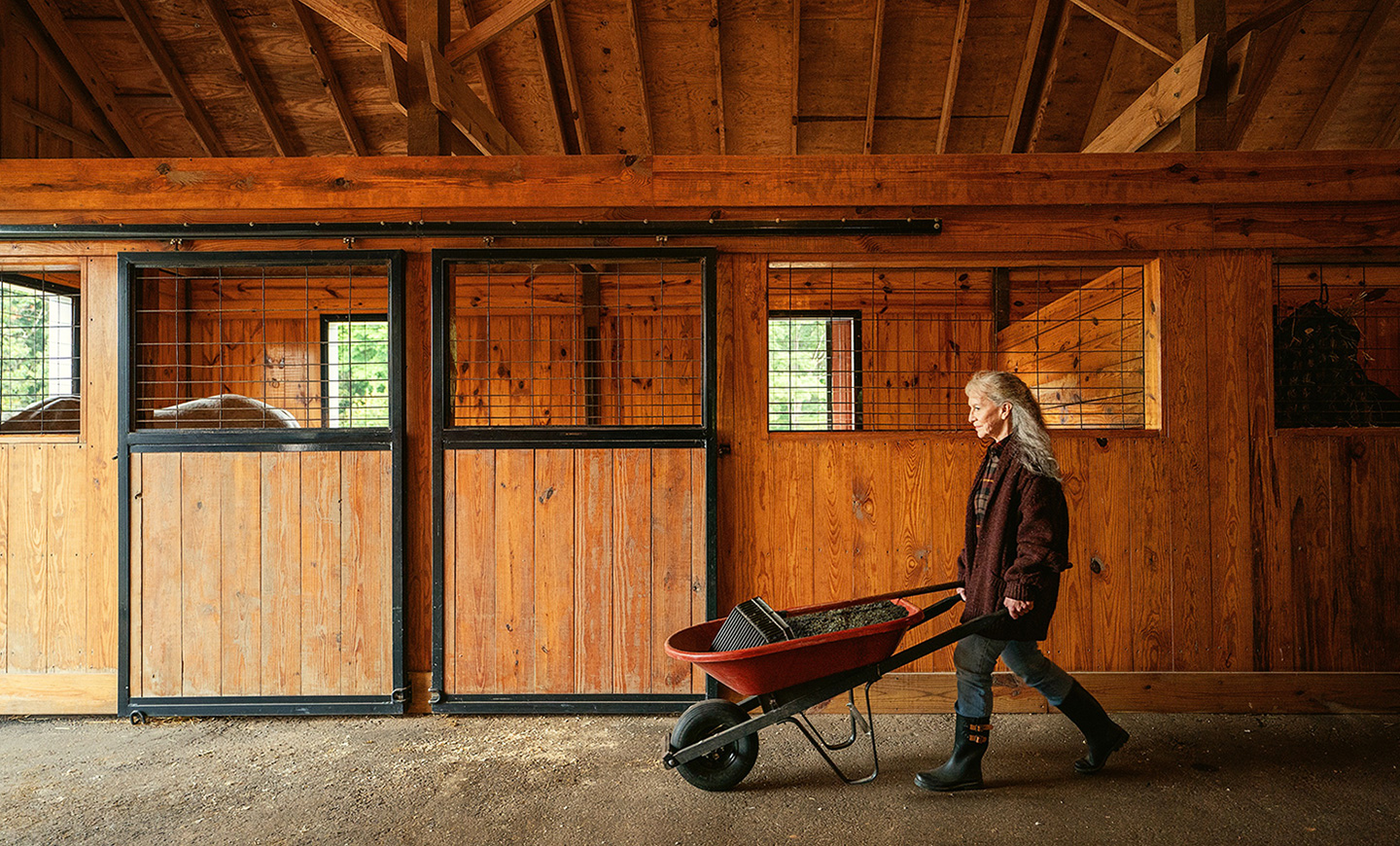
Read Article
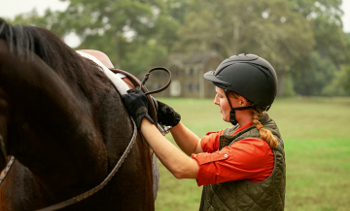
Read Article
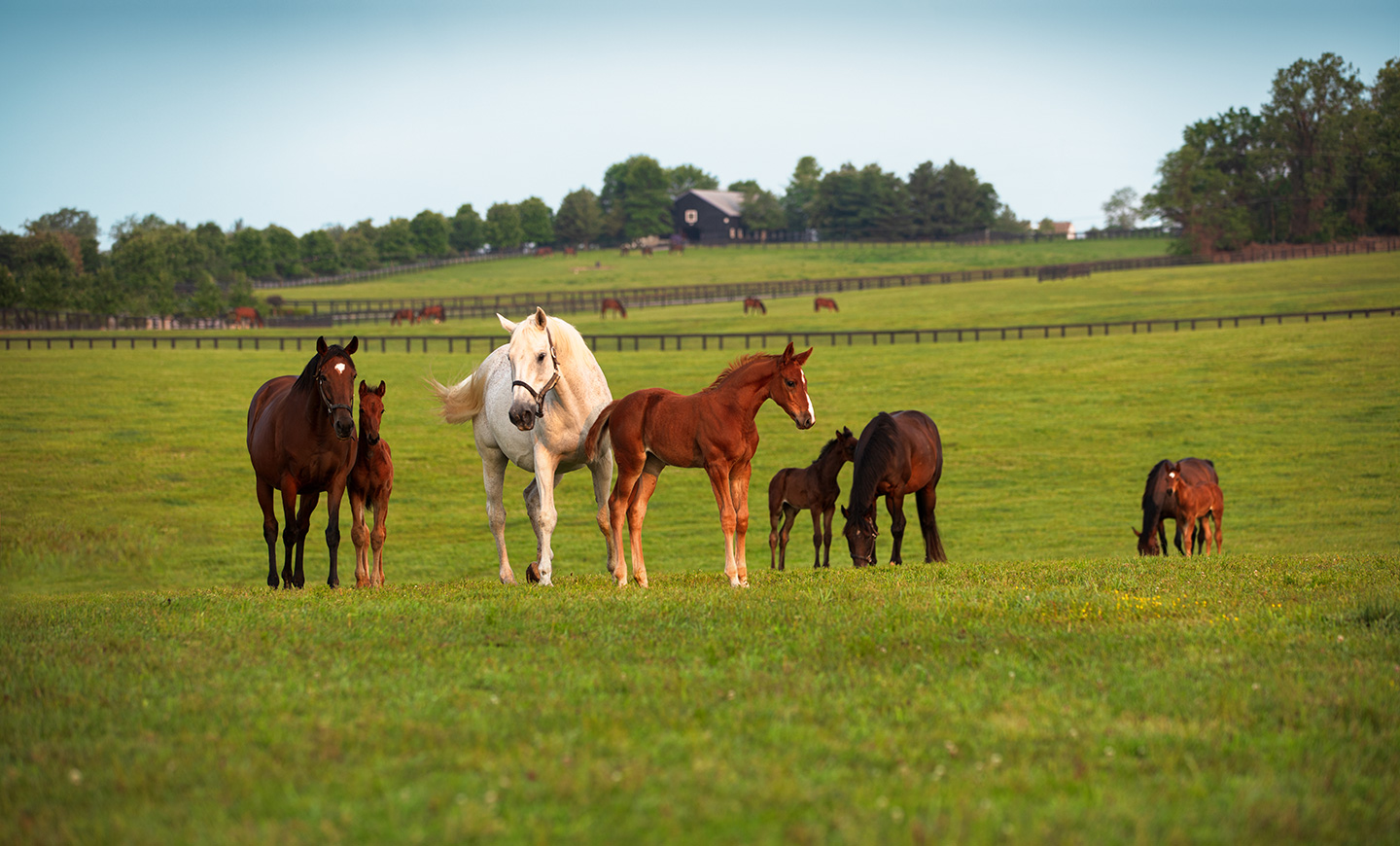
Read Article
References
All trademarks are the property of Zoetis Services LLC or a related company or a licensor unless otherwise noted. Stablelab is a registered trademark of Epona Biotech Limited, used under license.
© 2025 Zoetis Services LLC. All rights reserved. STB-00160R1